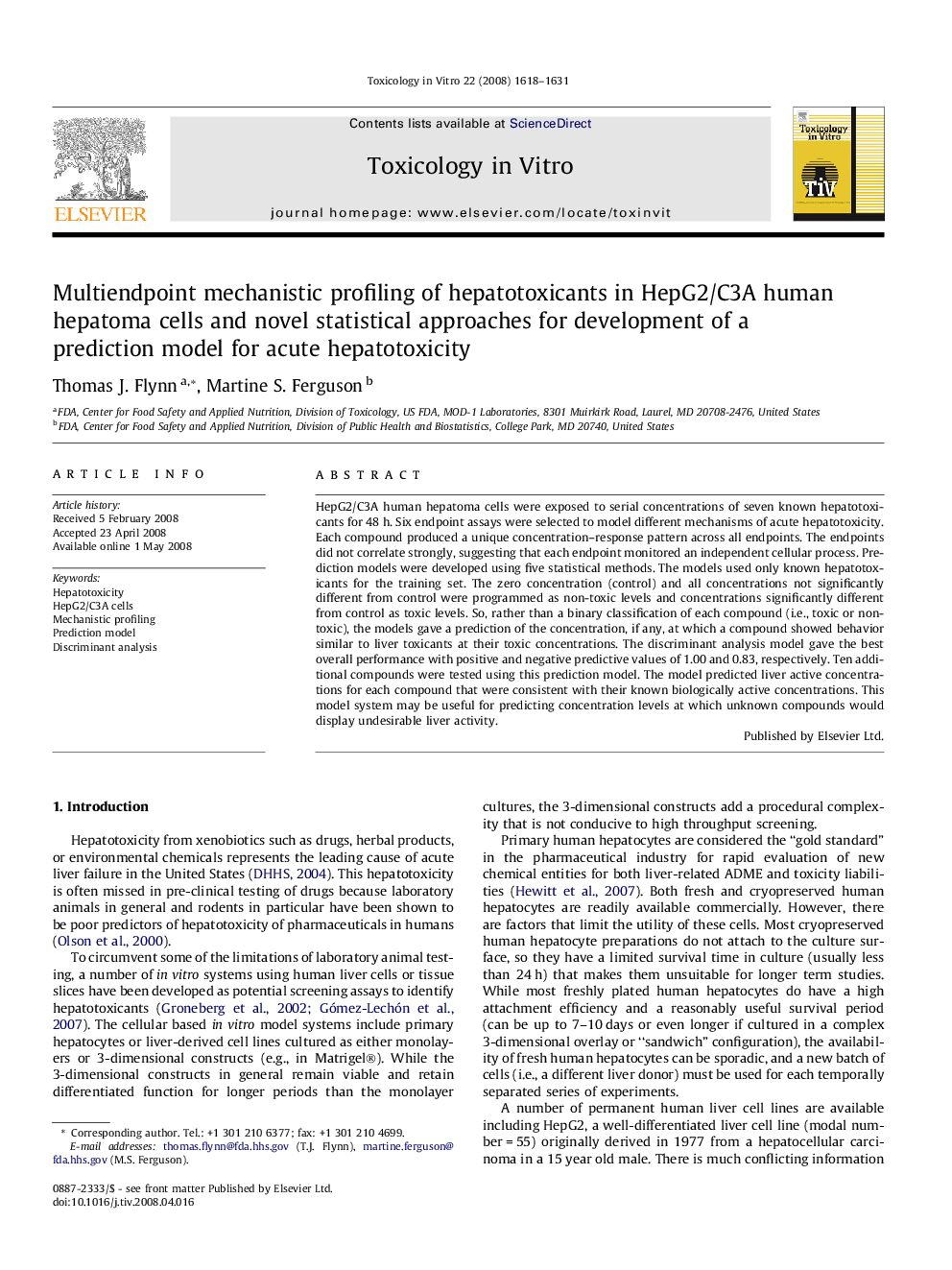| Article ID | Journal | Published Year | Pages | File Type |
|---|---|---|---|---|
| 2603110 | Toxicology in Vitro | 2008 | 14 Pages |
HepG2/C3A human hepatoma cells were exposed to serial concentrations of seven known hepatotoxicants for 48 h. Six endpoint assays were selected to model different mechanisms of acute hepatotoxicity. Each compound produced a unique concentration–response pattern across all endpoints. The endpoints did not correlate strongly, suggesting that each endpoint monitored an independent cellular process. Prediction models were developed using five statistical methods. The models used only known hepatotoxicants for the training set. The zero concentration (control) and all concentrations not significantly different from control were programmed as non-toxic levels and concentrations significantly different from control as toxic levels. So, rather than a binary classification of each compound (i.e., toxic or non-toxic), the models gave a prediction of the concentration, if any, at which a compound showed behavior similar to liver toxicants at their toxic concentrations. The discriminant analysis model gave the best overall performance with positive and negative predictive values of 1.00 and 0.83, respectively. Ten additional compounds were tested using this prediction model. The model predicted liver active concentrations for each compound that were consistent with their known biologically active concentrations. This model system may be useful for predicting concentration levels at which unknown compounds would display undesirable liver activity.
